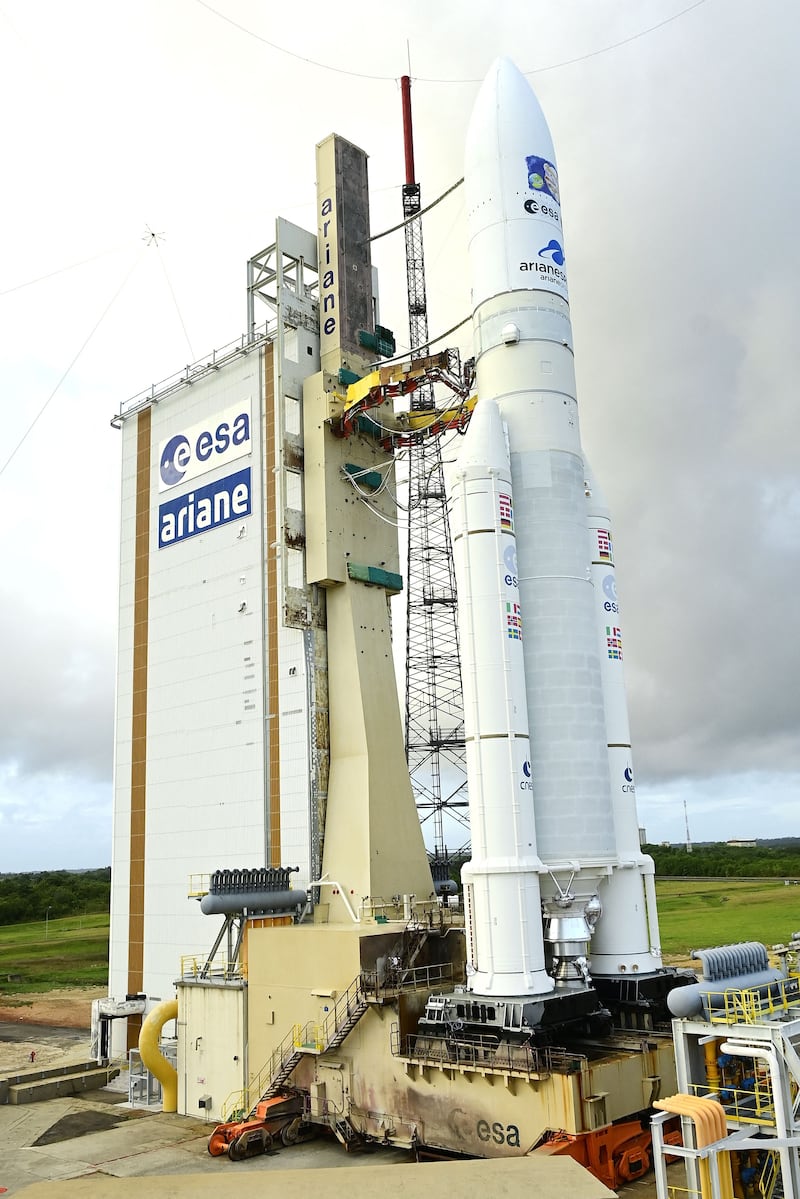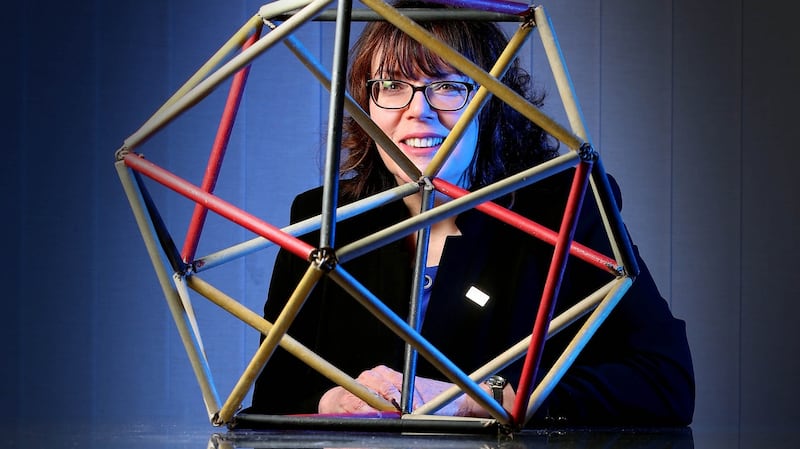The first ever mission in search for potential alien life in the outer solar system, a journey of 6.6 billion kilometres taking eight years to reach its destination, is about to take off with a key role being played by researchers from the Dublin Institute for Advanced Studies (DIAS).
The European Space Agency (ESA) Jupiter Icy Moons Explorer (JUICE) mission is scheduled to launch on Thursday on an Ariane 5 heavy-lift rocket from ESA’s spaceport in French Guiana. Ariane 5 has been in operation since 1996, and has launched many ESA space missions – the most recent being the Webb Space Telescope, with which DIAS was also involved.
The three Irish-based researchers, who will be at the European Space Operations Centre in Darmstadt, Germany, for the launch, are Dr Mika Holmberg, Prof Caitriona Jackman and Dr Corentin Louis.
The mission aims to make detailed observations of Jupiter as well as its three large moons – Callisto, Europa and Ganymede – some of which are believed to have oceans below their surfaces.
READ MORE
It marks a series of firsts as it is the first European-lead mission to the outer solar system and is the first spacecraft to go into orbit around a moon other than Earth’s moon.
The Irish contribution is through the DIAS Planetary Magnetospheres Research Group headed by Prof Jackman. They are involved in the operation of the radio and plasma wave instrument (RPWI) – one of 10 state-of-the-art instruments carried by JUICE.

It will characterise “the radio emission and plasma environment” of Jupiter and its icy moons. DIAS’ work on this is funded by Science Foundation Ireland and a ESE fellowship held by Dr Holmberg.
The group’s expertise includes studying how spacecraft can become electrically charged as they orbit in space. They work closely with engineers at ESA and scientists around the world to maximise scientific output of complex spacecraft instrumentation.
Once at Jupiter, instruments like the RPWI, will help measure the saltiness of oceans under the moons which is key for understanding if they can support life. It will also look for evidence of atmospheres at the moons.

“This is a very exciting mission to be a part of as it will help to expand our knowledge of the existence of life in our solar system and the habitats of these moons,” Prof Jackman said.
She added: “We are on the verge of enormous breakthroughs in our understanding of the Jupiter system. Several of the moons that JUICE will study are the most likely candidates for habitability in our solar system beyond Earth, so we are hopeful that this mission will help bring us closer to answering one of the most important questions that is facing humanity today – if we are alone in the universe.”
The ESA satellite will search for indications of conditions for life and evidence of microbial life in particular.
After years of work from scientists across the world, she said they were excited to finally be at launch stage. “Members of the planetary group at DIAS have been working extremely hard to ensure we maximise the scientific output of this mission and we look forward to being amazed by the new views it will give us of this wonderful gas giant planet and its exotic ocean worlds. It will be very special to have such cutting edge data arriving in Ireland for the first time,” she added.

DIAS chief executive and registrar Dr Eucharia Meehan said it was a fantastic achievement for their researchers to be involved in such a ground-breaking mission, which is expected to provide crucial insights about the Universe.
“DIAS has a long history in being at the forefront of Ireland’s involvement in cutting-edge space research, most recently with the Webb Space Telescope... we are looking forward to seeing the first images from the spacecraft in a few months’ time.”
Ireland is a member state in ESA; a group of 18 research institutes, 23 countries and 83 companies, while more than 2000 people have contributed to the JUICE mission.















